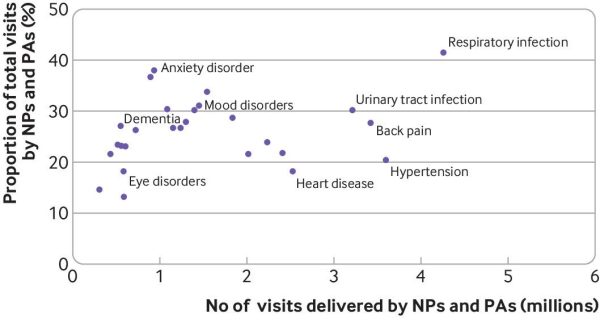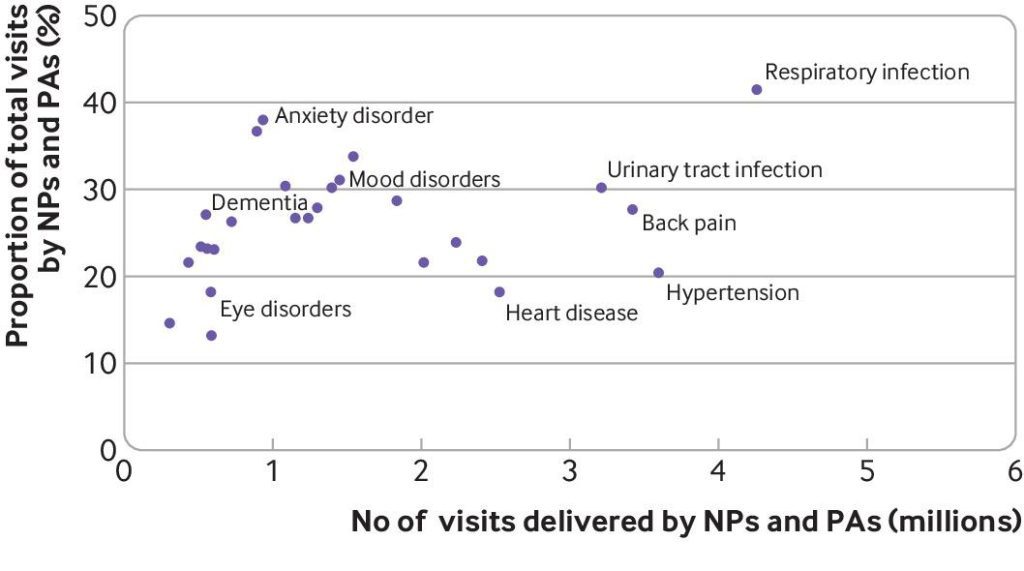The number of patients who see a nurse practitioner or physician assistant has increased from 14 percent in 2013 to 26 percent in 2019, a Harvard study found.
The analysis looked at 276 million visits by Medicare insured patients and found the percentage varied based on conditions. For example, while nearly half of patients with respiratory infections saw an advanced practice provider, while that was only true for 13 percent of visits for eye disorders and 20 percent for hypertension.
Co-author Sadiq Patel, a former National Institutes of Health postdoctoral fellow at Harvard Medical School, said these findings provided useful context for the increase in NP and PA visits.
Nurse Practitioner Fastest Growing Job in the Country
Nurse Practitioners Should Get Reimbursement Parity
“The high use of nurse practitioners and physician assistants for anxiety disorders is another interesting example,” he noted. “There simply aren’t enough psychiatrists to treat all the people who need care for mental health conditions.
“But the good news is that there are highly effective evidence-based treatments that can help a lot of people with depression and anxiety that do not require a physician to deliver.”

Co-author, Ateev Mehrotra, a professor of health care policy at Harvard, noted that all three clinician types already work together in teams and most research shows they do an equally good job delivering care, especially in primary care settings, and at similar costs.
“Hopefully one benefit that will follow from this research is that we will be able to identify the services that allied health professionals can deliver and provide the training and support services they need to take care of their patients, like proactively planning for remote supervision in more complex psychiatric services or specialist consults by telemedicine,” he said.
The contents of this feature are not provided or reviewed by NPWH.

